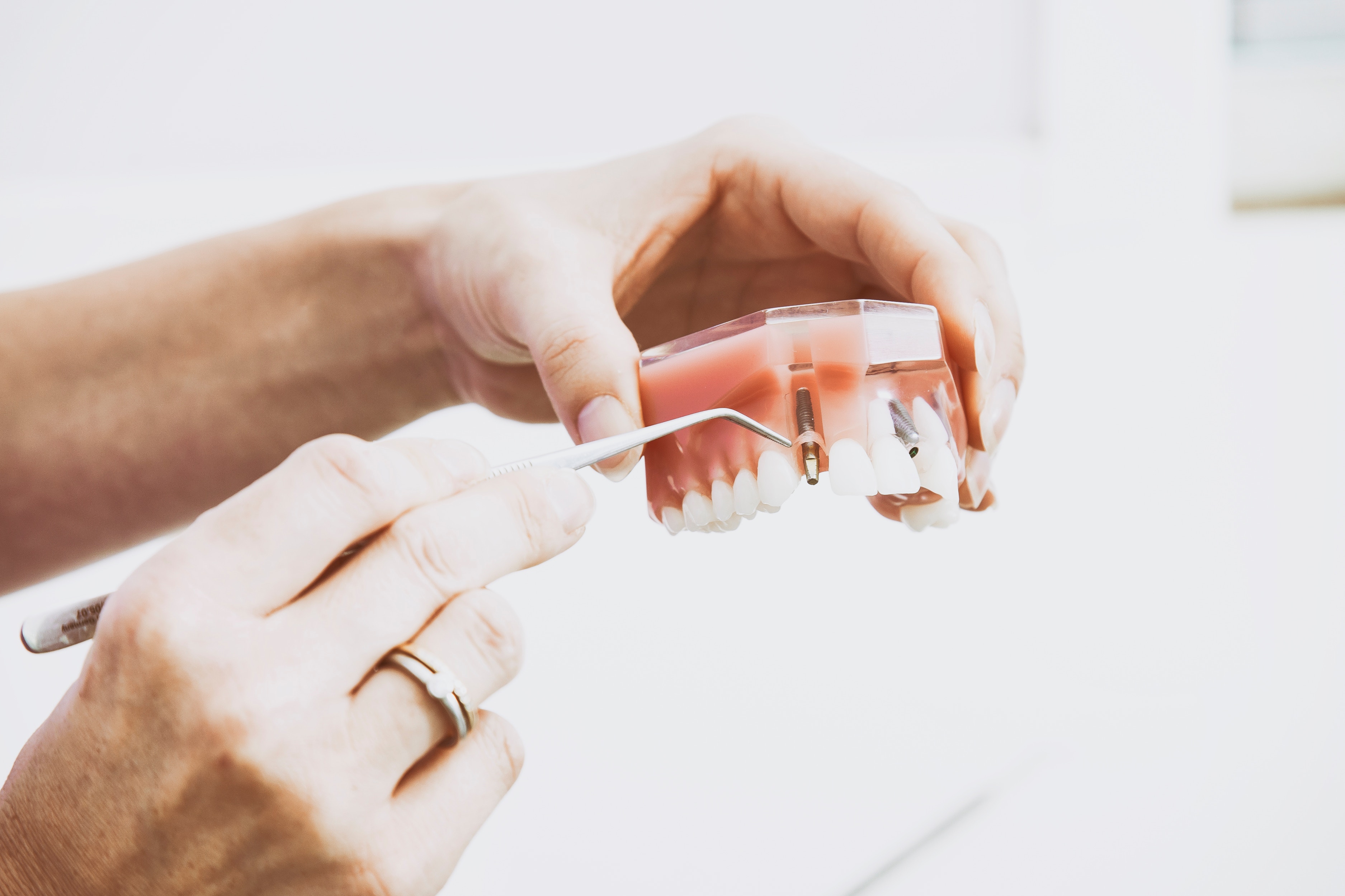What we offer
Improve Your Quality of Life With Dental Implants
When we have missing teeth our day-to-day tasks of eating, speaking, and smiling can become increasingly difficult. When we lose the confidence to perform tasks independently, quality of life can be diminished. With dental implants, your quality of life can be restored with the replacement of missing or damaged teeth through the use of seamless dental technology. If you’re struggling to decide where to go from here, reach out to our experienced team of professionals to guide you through the dental implant process.
What Are Dental Implants?
Dental implants consist of a replacement tooth and a titanium rod that’s inserted into the jawbone to secure it. Replacement teeth are usually made of some kind of porcelain such as zirconia, leucite, or lithium disilicate – all of which look very much like natural teeth due to the coloration and the way light is diffused. Dental implants are permanent and stay in the mouth, so you can care for them just like natural teeth.
Are Dental Implants Right for You?
You may be a good candidate for dental implants if you’re missing one or more of your teeth but otherwise have healthy gums. Patients must have healthy, strong jaw bones and gums to avoid complications and ensure that there’s enough support for the titanium rod that forms the base of the implant. For this reason, some patients may need procedures like sinus augmentation, ridge modification, or bone grafts before they’re candidates for implants.
What Is the Purpose of Dental Implants?
The purpose of dental implants is to replace missing teeth or repair damaged ones to improve a person’s ability to speak, chew, and smile. Compared to implants, dentures can be problematic, slipping while you talk and limiting your ability to eat certain foods. Bridges and crowns are more permanent solutions, but these are sometimes uncomfortable and often stand out against natural teeth. Implants tend to last longer than other solutions and fit better, increasing comfort and appearance.
Replace and repair
Preserving the Health of Your Teeth and Gums
When adults lose a tooth, it can cause trouble with daily tasks like eating and talking and even lower your confidence. Dental implants can help to restore the look and functionality of your smile. If you’ve lost a tooth or need to have teeth pulled due to damage, a dental implant may help you avoid experiencing any significant oral changes and preserve the health of your teeth and gums for the long run.
Benefits of Dental Implants

There are numerous benefits to getting dental implants, including:
How it works
How Dental Implants Are Placed
Dental implant procedures may be a little different for each patient depending on oral health and specific issues. The procedure is usually done in two to three visits throughout anywhere from three to nine months or longer.
Step 1:
Dental Evaluation
The first step that needs to be done before any dental implants are given to a patient is a professional dental evaluation. A dentist will assess the health of your teeth, gums, and jaw, to be certain that implants will be the best option for you. This is a crucial step since if a patient’s gum health is not in order, the implants will not last.
Step 2:
Preparing for Dental Implant Surgery
Once a dentist is confident that a patient can maintain implants, then a dentist will need to prepare for the dental implant surgery and evaluate the scope of the procedure, and how many teeth will need to be replaced.
Step 3:
Placing the Dental Implant
After evaluation and preparation is complete, it’s time to install the dental implant securely in a patient’s mouth. If you have an endosteal implant, holes are drilled into the bone for the insertion of the implant post. If you have a subperiosteal implant, the implant post will be placed above the bone.
Step 4:
Metal Extender Placement
An abutment, or metal extender, may be placed in a patient’s mouth during the first placement procedure or a second follow-up procedure. An abutment will help restore the connection between the implant and the replacement tooth and prevent tissue from growing over it.
Step 5:
Osseointegration
Osseointegration is a phrase used to describe the combining of the bone and implant. The jaw then begins to grow around the dental implant. This process has the potential to take two to six months, depending on how quickly a patient heals from the initial procedure.
Step 6:
Replacing Temporary Teeth
After osseointegration the temporary teeth used in the first procedure need to be replaced with permanent teeth that can be removed from a patient’s mouth if needed.
Step 7:
Dentist Follow-Up
After all procedures are finished and healing has finished, you will need to regularly follow up with your dentist for ongoing checkups and cleanings. While implants are long-lasting, you will still need to keep up your routine oral health and hygiene.

Dental implants built to last
Healthy Gums, Secure Implants
Never underestimate the power of a full smile. Life is made easier when we feel confident and can eat, drink, laugh, and conversate with ease. Taking care of your oral health is made simpler when patients opt for dental implants.
Our Doctors
Meet our Family of Dentists
Dr. Standish has been serving Clay County patients at Eagle Harbor Dental for over 40 years. His daughters Dr. Kelly & Dr. Erin joined the practice and they’ve been creating beautiful smiles as a family ever since. With extensive educations and memberships, our dentists are the best that Fleming Island has to offer.





We've Got You Covered
Insurance We Accept
Don't see your insurance listed? No worries! If you have a PPO plan, you can use it here.
Contact us
to verify your coverage
Ready to get started?
Book your appointment
Give us a call
(904) 269-6558
or send us a message using the form below









